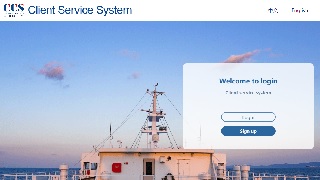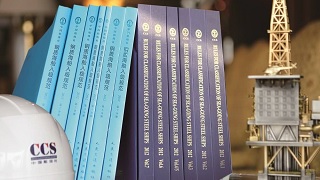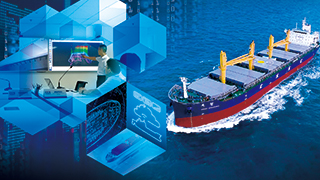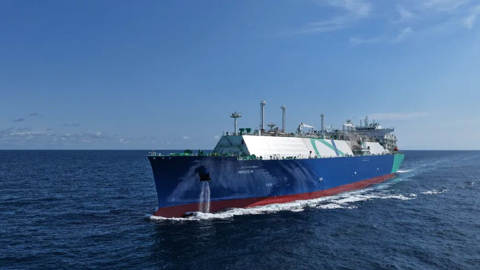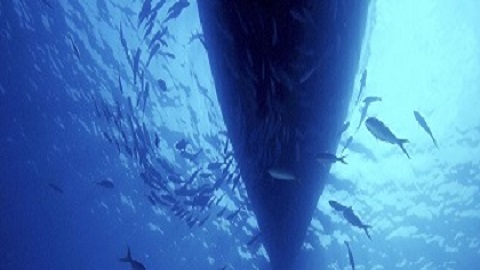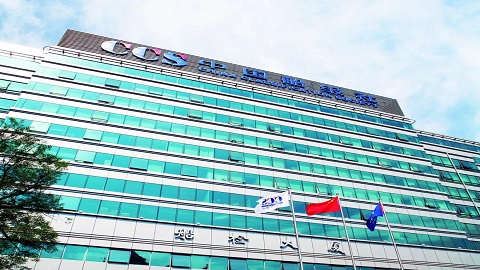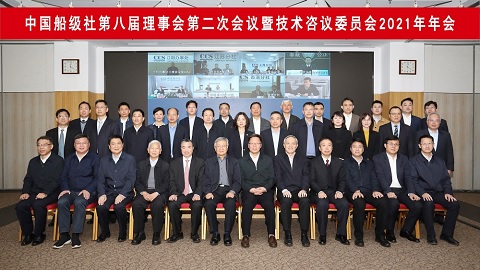As the global shipping industry seeks technological solutions amid decarbonization waves, an EU-funded pioneer initiative—ALL-DC-SHIPS is poised to reshape vessel power systems.
By Longyu Xue, China Ship Survey
As the global shipping industry seeks technological solutions amid decarbonization waves, an EU-funded pioneer initiative—ALL-DC-SHIPS is poised to reshape vessel power systems. This €10.2 million innovation program, uniting 12 partners across eight European countries under the EU’s Horizon Europe framework, was officially launched in Brussels in February 2025. By pioneering a fully DC-based architecture, the project aims to deliver efficient, low-carbon energy solutions for the maritime sector. Scheduled to run for three-and-a-half years through July 2028, it targets key technologies development and real-vessel demonstration of a full DC grid concept to propel the acceleration of maritime electrification.
In a recent exclusive interview with China Ship Survey, Dr. Pietro Tricoli—Project Coordinator and Professor of Power Electronics Systems within the Department of Electronic, Electrical and Systems Engineering, University of Birmingham—shared his insights into ALL-DC-SHIPS’ roadmap. He detailed the project’s current progress, core technological breakthroughs, and the critical advantages of a full DC grid in establishing reliable, low-loss vessel power systems. While highlighting the operational range limitations of current battery technologies for vessels, he presented shipowners and operators with practical approaches to navigate the constraints. Exemplified by ALL-DC-SHIPS’ collaborative model, Professor Pietro Tricoli further demonstrated how synergistic industry-academia-research integration accelerates sector-wide transformation, underscoring Europe’s exemplary practices in fostering such partnerships.

Dr. Pietro Tricoli, Professor of Power Electronics Systems within the Department of Electronic, Electrical and Systems Engineering, University of Birmingham
Q: Could you please provide an overview of the current progress of the ALL-DC-SHIPS project and share the upcoming work plans?
A: The project started in February 2025 and runs until July 2028. We are currently reviewing the existing and proposed standards for the use of direct current (DC) power on vessels and identifying the use cases that would benefit the most from the application of a full DC power system, i.e. a power system with both the primary and secondary grids based on DC technology. From May 2025, the development of three key technologies for the project starts: a new marine certified DC-DC silicon-carbide converter for primary grids at 1,000 V DC; a new high-efficiency DC-DC converter for secondary grids at 400 V DC; and a new solid-state DC circuit breaker for secondary grids at 400 V DC.
Q: What are the core technical tasks within the ALL-DC-SHIPS project, and what key technological breakthroughs are expected? Which aspects is your team at the University of Birmingham primarily leading?
A: The primary technical task is the development of these 3 key components that are essential for the design and deployment of a full DC power system. The expected benefits are the reduction of losses in the power system, a better voltage regulation, and a higher efficiency of the generators, all thanks to the new DC technology. A major breakthrough is in the adoption of solid-state protections, that would be able to address one of the key challenges in DC power systems that are the high short-circuit currents. Solid-state circuit breakers can detect and interrupt short circuit much faster than conventional electromechanical circuit breakers, thereby reducing significantly the damages caused by short circuit events.
The University of Birmingham is the project coordinator and, as such, is responsible for the overall planning, delivery and validation of the project. The University of Birmingham is also leading the dissemination and exploitation activities of the project. The University of Birmingham also has responsibility for the assessment of the safety critical components on board, the modelling of the vessel’s power system to analyse short-circuit events, as well as understanding in quantitative terms the benefits of using solid-state bus ties between the port and starboard bus bars in the primary switchboard.
Q: The project proposes upgrading both primary and secondary shipboard grids to DC systems. Compared to traditional solutions, what are the critical advantages of a fully DC-based architecture? What potential environmental and economic benefits could it deliver?
A: The advantage of using DC for the primary grid is the possibility of regulating the speed of the generators to adapt to the power requirements of the electrical loads. For each power level, the speed can be regulated to the point of optimal efficiency of the generators, reducing the fuel consumption by 5-10%.
A full DC grid enables the feeding of power converters directly from their DC link, saving a power conversion step to rectify the AC power into DC power. As nearly all the power on a vessel is distribute through power converter, a full DC grid would reduce significantly the cost of power converters as well as power losses by 15-30%.
Q: On what kind of vessels does the project plan to demonstrate the full DC grid concept? Which types of vessels are prioritized for adopting this solution?
A: The proposed full DC grid will be demonstrated on a nearly 3,000 GT dredger owned by partner Jan De Nul. Other use cases are cruise vessels, for which a dedicated study will be carried out in the project supported by the project partner Compagnie du Ponant.
Q: You emphasized the urgent need to scale up low-carbon power sources and energy storage solutions for waterborne transport decarbonization. What concrete actions should industry stakeholders take to accelerate this effort?
A: In my view, shipowners and ship operators should review the operations of their vessels and check if they would be suitable for a partial or full electrification. For example, adopting hybrid systems with a small battery would significantly help to cut emissions without a huge investment. Suppliers should be up to date on emerging storage technologies, as every year new batteries are developed that improve energy density and safety on board. For example new lithium-iron-phosphate batteries have a much lower fire risk than lithium-nickel-manganese-cobalt batteries and their energy density is getting closer year on year. Both factors are essential to give shipowners and ship operators reassurance that the new technologies will not be harmful for their vessels.
Q: How do you view the prospects of maritime electrification and its role in the industry's decarbonization process? What major challenges remain unaddressed in this domain?
A: Maritime electrification is an exciting domain and presents unique challenges for electrification that can’t be sorted at once with today’s technology. Batteries alone are not a viable solution for all use cases and new technologies like metal-air batteries that could be real game changers are still at a too-low technology development stage to be considered over the next few years. Achieving vessel ranges of thousands of miles without using any fuel is the major challenge and speaking today there are no solutions that could even theoretically achieve that. Low-carbon fuels appear today the only solution. Maritime electrification will increase significantly for coastal navigation and intra-water navigation, and this would be a significant step forward as these vessels operate in proximity where people live an where air quality is more important.
Q: As a large-scale Horizon Europe project involving 12 partners across eight countries, how does the ALL-DC-SHIPS project coordinate resources and expertise among the partners to achieve technological synergy?
A: The ALL-DC-SHIPS project received funding from the European Union’s Horizon Europe programme under Grant agreement No. 101192732. The project partners are: University of Birmingham; BL!XT; Commissariat à l’Energie Atomique et aux Energies Alternatives; Compagnie du Ponant; DEIF A/S; DEIF Wind Power Technology Austria; Flanders Make; Infineon Technologies Austria AG; Jan De Nul; KAI Kompetenzzentrum Automobil - und Industrieelektronik; Rina Germany; and Sintef Energi.
The consortium is highly complementary and brings together multi-disciplinary expertise to tackle the project challenges. We have technology providers to develop the key components, end-users to test the technology and help with the exploitation plan, classification societies to look at the risk assessment, safety on board, and certification, and research partners to provide the required modelling and numerical analysis of the proposed solutions.
Q: Based on your research experience at the University of Birmingham, what recommendations would you give to strengthen academia-industry collaboration, facilitate valorization of the research results, and drive the transition toward a sustainable future for the maritime sector?
A: Collaboration between academia and industry is key for the advance of new technologies, as academia and industry provide complementary skills to approach the challenges of the maritime sector. Collaborative research projects like those funded by Horizon Europe provide the ideal environment for this collaboration, setting the foundations for the transfer of idea from academia to industry and driving forward innovation. This is particularly important for the electrification of the maritime sector, as the introduction of several technologies at the heart of decarbonization are still at an early stage of development and not well known in the sector.
Q: Could you please share some exemplary practices that Europe has in promoting industry-academia-research integration and collaboration?
A: Horizon Europe is the flagship programme for research and innovation in Europe and provides support collaboration across the industrial and research sectors to tackle the major challenges of our society. For industry, it enables access to key knowledge and infrastructure of the research partners that are particularly valuable for testing new technologies ahead of their deployment into real life product, increasing their competitiveness. For research partners, it is a great route for creating impact and working alongside industry experts and applying their research into practical applications.
Note: If you need to reprint, please indicate the source of the information.

